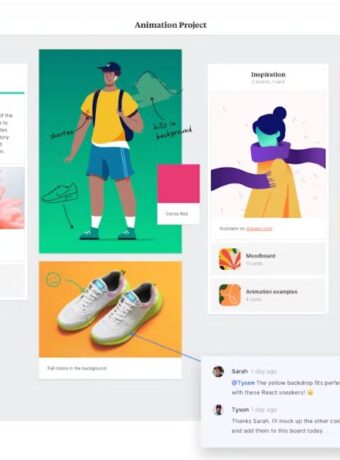4 Seasonal Design Vibes: Find Your Brand’s Voice
Your brand should feel like you, and this is where seasonal design comes in.

Clear. Consistent. Easy to recognize and easy to explain. But most people struggle to describe their brand personality in simple terms. That’s where seasonal branding gives you structure.
Seasonal branding uses the moods of Spring, Summer, Autumn, and Winter to help you define how your brand looks, feels, and sounds. Each season comes with a distinct visual personality. Once you understand which one matches you, decisions get easier. Your visuals make sense. Your voice feels natural.
And your style becomes consistent across everything you do.
What Is Seasonal Design in Branding
Seasonal branding is a visual system based on four mood styles. These styles follow the emotional qualities of the four seasons.
- Spring is fresh and light
- Summer is soft and refined
- Autumn is warm and grounded
- Winter is bold and clean
Each season includes color palettes, font types, image styles, and textures that reflect a personality type. You use the season as a filter.
It helps you decide what belongs in your brand and what does not.
Why Brand Personality Often Feels Unclear
You may know what you like. You may know your product is great. But when it comes to your visuals and your tone, everything feels a little off.
You try to look high-end and friendly. Or minimal and playful. And it ends up looking flat or inconsistent. That happens when your brand lacks structure. You’re mixing traits from different personalities.
Seasonal branding solves this by giving you one clear mood to follow.
What Each Season Says About Your Brand
Spring
Spring brands feel cheerful, energetic, and friendly.
They use light, happy colors like peach, mint, or pale yellow. Fonts are round, fun, and easy to read.
Spring is great for wellness brands, early-stage startups, or anyone with a bubbly, fresh style.
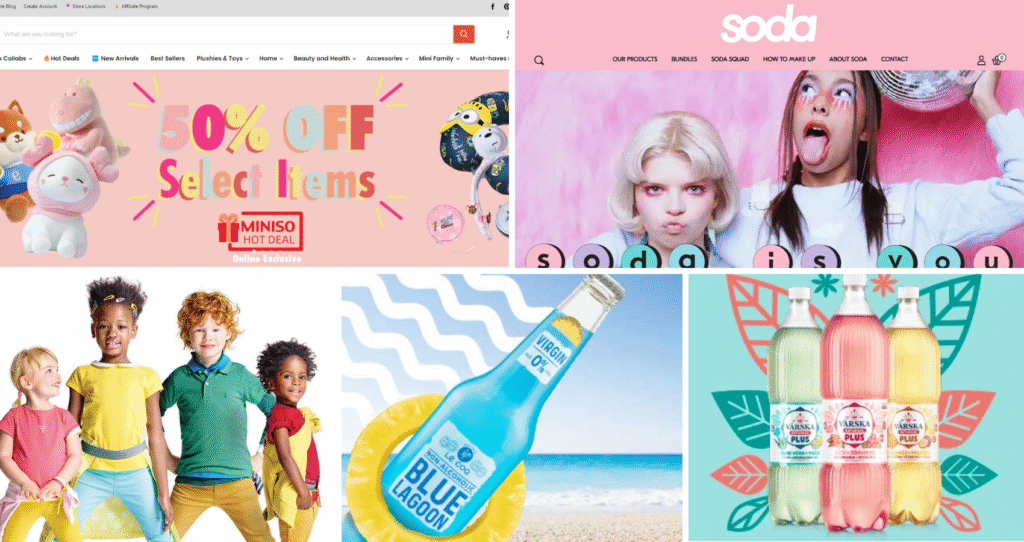
Real life examples: Miniso, Soda, Okaidi, Värska
Summer
Summer brands feel calm, elegant, and thoughtful.
Colors are soft and muted, like powder blue, lavender, and warm grey. Fonts are classic, usually serif or thin sans serif.
Summer works well for photographers, therapists, and high-touch service providers.
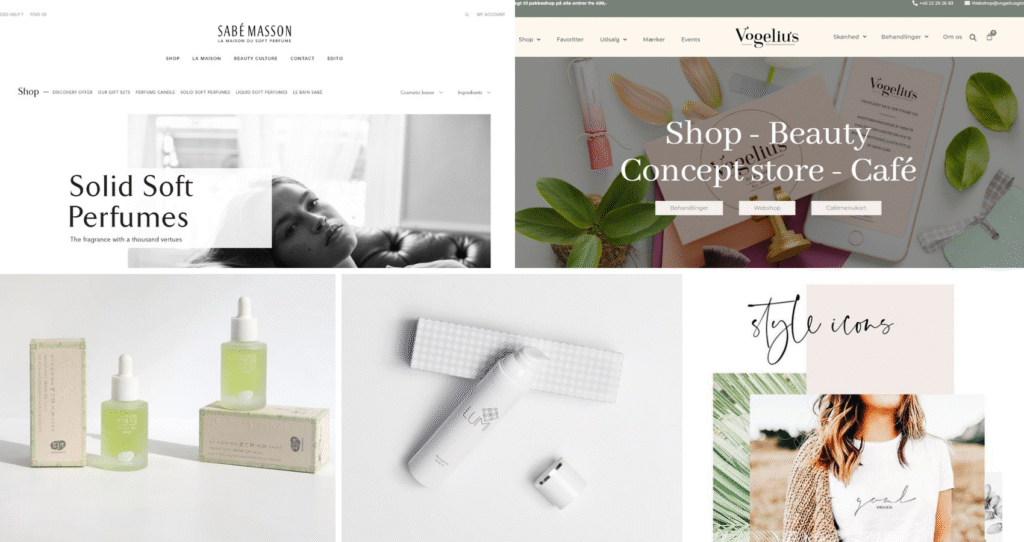
Real life examples: shaydacampbell.com, Vogelius Glow, Lumene, Hwamisa
Autumn
Autumn brands feel warm, earthy, and creative.
Colors include rust, olive, mustard, and other rich tones. Fonts often feel vintage or handcrafted.
Autumn fits artists, coaches, educators, and businesses that want to show depth and passion.
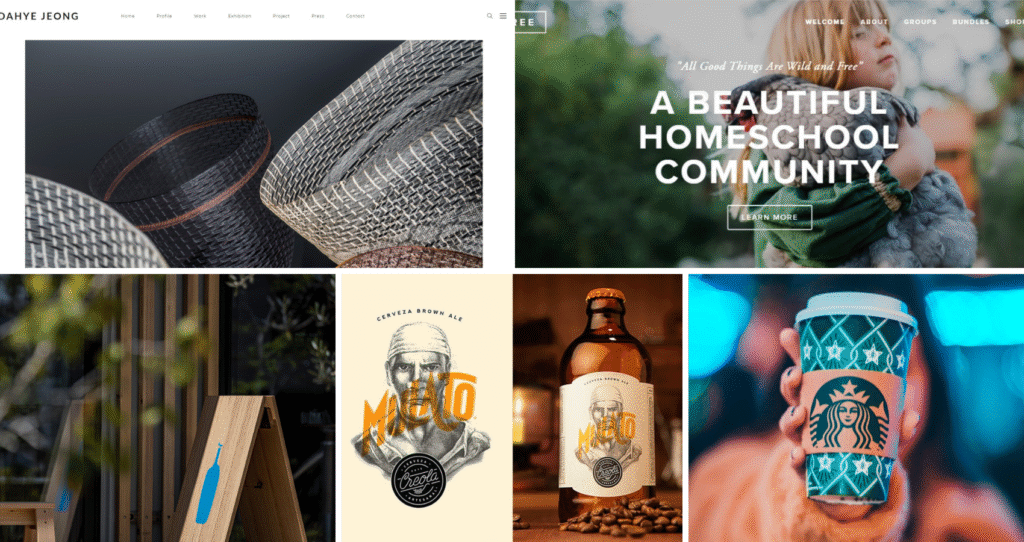
Real life examples: Aga Sideri, Butikrot, Guiness, Lonely Planet
Winter
Winter brands feel sharp, confident, and bold.
Think black, white, and deep jewel tones. Fonts are clean and minimal, with strong contrast.
Winter works for luxury brands, designers, tech leaders, and those who want to look polished and powerful.
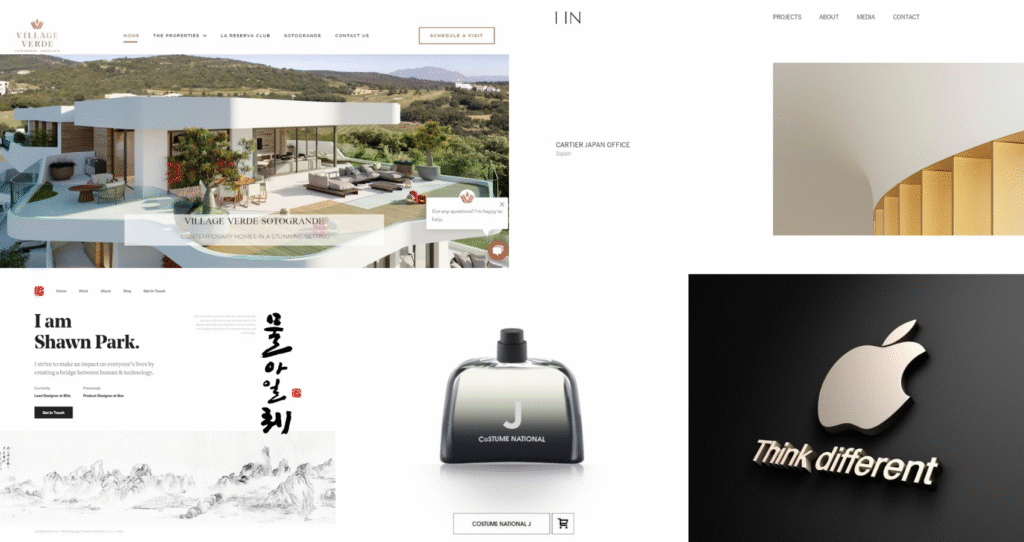
Real-life examples: Aesop, Ganni, Thomas Juul Hansen
How the Seasonal Framework Helps You Decide
It shows you your true style
When you define your season, you stop guessing. You pick fonts, colors, and visuals that support one clear personality.
It helps you say no
You avoid design choices that feel trendy but don’t fit. You stop switching styles every few months.
It saves time
You know your visual language. You can hire help, create content, or build your site without starting from zero.
It creates emotional alignment
People feel something when they see your brand. When your season matches your personality, that feeling is strong and clear.
Examples of Seasonal Personalities
You’ve seen seasonal branding in action even if you didn’t know the term.
Spring feels like Mailchimp or Notion’s early design. Light, playful, and fun.
Summer feels like Saffron Avenue or Kinfolk. Elegant, gentle, and refined.
Autumn feels like The Body Shop or Everlane. Natural, rich, and connected to values.
Winter feels like Apple or Chanel. Clean, dramatic, and confident.
How to Find Your Brand Season
Look at your tone of voice.
Your favorite visuals. Your dream clients. Your personal style. It all connects.
Start by choosing three words that describe how you want people to feel when they see your brand. Then match those words to a season.
You can also use a brand personality quiz or start a moodboard. Look for color and font patterns.
Notice what you always come back to.
What to Do Once You Know
Once you know your season, build around it.
Pick fonts, colors, and image styles that reflect that mood. Remove anything that pulls away from it.
Update your website, logo, social visuals, and templates to follow one clear path. This doesn’t mean you look boring.
It means you look consistent and intentional.
Final Thoughts
Seasonal branding brings focus to your brand.
It shows you what feels right and what doesn’t. It turns your brand into something people can feel.
When everything matches your mood and personality, your brand looks better, feels better, and works better.
If you want help defining your brand season, join the Creative Access membership for templates, moodboards, and training.
Learn More About Seasonal Design and Branding
5 Key Elements of Personal Branding for Designers
What Is the Seasonal Design Approach?
What is Brand Anatomy – Its 8 Major Elements
Last Updated on 24/05/2025 by Victoria Silber





